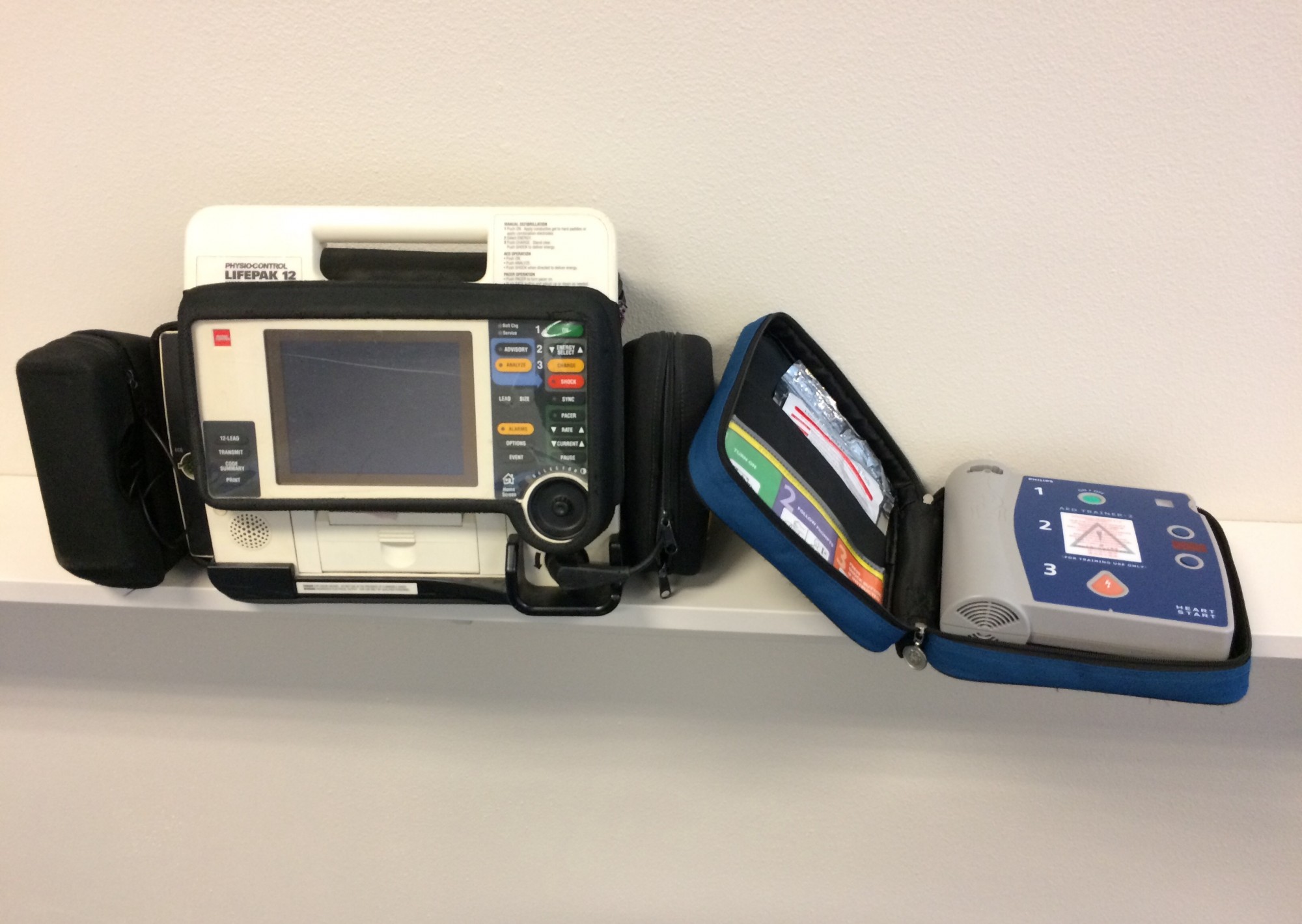ACLS topic: Manual vs. Automated defibrillators
While all CPR classes offered at CPR Seattle include hands-on training in the use of an AED (Automated External Defibrillator), only the ACLS course (Advanced Cardiac Life Support) includes practical training in the use of a manual defibrillator.
The American Heart Association ACLS program requires each student to go through several code simulations during which the manual defibrillator is deployed, the victim’s cardiac rhythms are interpreted, and a corrective shock is applied. This means that each ACLS student must be familiar with the reasons for using the manual defibrillator and the knowledge required to apply one effectively. Studies have shown that there is a general advantage in using a manual defibrillator instead of an automated defibrillator (AED), as the time interval from the defibrillator arrival to the first shock can be greatly reduced by use of the manual defibrillator. This is because the shock parameters will be determined more quickly by a human than by the automated processes of the AED. When used by an experienced operator, the interruption of chest compressions can be reduced to a few seconds, as opposed to almost a full minute (in some cases) for an AED due to the time it takes for the AED to analyze the heart rhythm. Although there are substantial advantages to the use of a manual defibrillator, there is a drawback: there is an increased chance of the operator delivering an inappropriate shock. For this reason it is crucial that ACLS students rehearse and hone their ECG (electrocardiogram) interpretation skills.
Some manual defibrillators may have capabilities that AEDs do not, such as pacing (delivering pulses of current to stimulate heart contraction) and cardioversion (converting tachycardia or arrhythmia to a normal heartbeat). Manual defibrillators will generally have three basic modes of operation: synchronized cardioversion, external defibrillation, and internal defibrillation. Some defibrillators are integrated into machines that will allow for monitoring of SpO2 (oxygen levels in the blood), ETCO2 (concentration of exhaled carbon dioxide at the end of a breath), and NIBP (blood pressure).
During treatment for sudden cardiac arrest, various ACLS algorithms may be used in conjunction with the defibrillator, depending on the type of arrest (i.e. ventricular fibrillation or pulseless ventricular tachycardia). Manual defibrillators have capabilities that AEDs do not, such as pacing (delivering pulses of current to stimulate heart contraction) and cardioversion (converting tachycardia or arrhythmia to a normal heartbeat). The ACLS student will use an electrocardiogram reader in order to diagnose a cardiac condition and determine the appropriate settings (e.g. the charge in joules) for the defibrillator.
In some cases, a patient being treated for cardiac arrest may be switched from an AED to a manual defibrillator.
Removing one set of pads to replace it with another is time-consuming and interrupts the resuscitation effort. If the AED and manual defibrillators being used are both made by the same manufacturer, then the electrode pads can simply be switched from one to the other. If the defibrillators are made by different manufacturers, a connection cable will need to be used.
An AED is an excellent tool for lay rescuers to use in sudden cardiac arrest situations, and for medical professionals to use when waiting for the arrival of a resuscitation team. ACLS training provides the knowledge and practice necessary to achieve optimal outcomes through the use of the manual defibrillator, an indispensable tool in the successful treatment of cardiac arrest.
Enjoy our blog? follow us on Facebook.
Published on October 7, 2014
